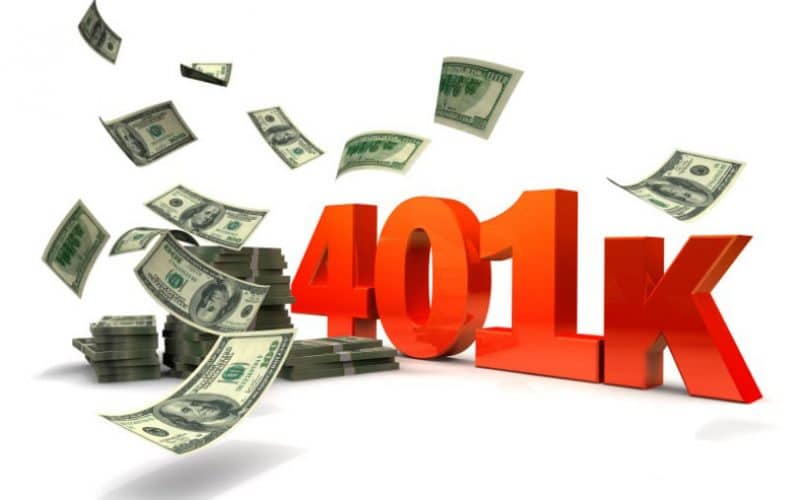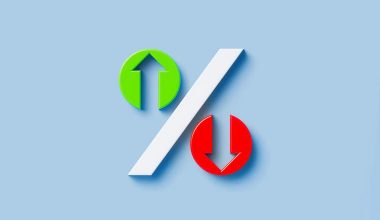There are annual contribution caps since the government regulates 401(k)s as tax-deferred retirement accounts. Nevertheless it takes into account the fact that retirement costs would rise due to inflation over time and adjusts its limits annually, occasionally increasing them. All of the Roth employer 401k max contribution for 2023 are comprehensively discussed here.
401k Contribution Max for 2023
The elective deferral maximum for 401(k)s is $20,500 in 2022 and $22,500 in 2023, which is what most people think of when they hear “401k contribution max.” That’s the most you can put away in your 401(k) this year on your own accord. Catch-up obligations, or further voluntary deferrals, of $6,500 are permitted for those aged 50 and up in 2022. In 2023, you’ll be able to put away up to $7,500 in catch-up contributions, up from the current $5,500. They can now put away up to $30,000 into their 401(k) in 2023, up from $27,000 in 2022.
The Internal Revenue Service places max on 401k contribution made during the year. In 2022, the thresholds are set at $61,000 and $67,500, respectively. In 2023, the maximum will be raised to $73,500 for individuals and $81,000 for married couples. It covers both your own money and any money your company puts into your 401(k) on its own.
There are certain extra constraints for highly compensated workers. In 2022 and 2023, employers only count the first $305,000 or $330,000 of salary deferrals for employer matching contributions.
Let’s pretend for a moment that in 2023 you earn $400,000 and your employer offers to match up to 6% of your earnings. If your salary is $400,000, 6% of that is $24,000, but the highest amount an employer may pay an employee in 2023 is $330,000, your firm can only match up to $330,000. To clarify, the 401k max employer contribution would be $19,800, up from the previous maximum of $18,000.
Overview
401(k)s and other long-term savings plans help employees save for retirement. The IRS considers them “qualified plans,” giving participants (either employees or employers) tax benefits.
Employee donations are generally deductible from gross income, which might improve their tax situation. As a result, your tax burden will be lighter. The money you set aside from each paycheck can grow tax-free in an investor, increasing your wealth over time.
Certain companies even go so far as to contribute an equal amount to their workers’ retirement funds. Since it functions like a savings bonus, workers should take advantage of it whenever it’s offered. According to Fidelity Investments, in 2020, the typical employer game was 4.7% of the worker’s total income.
After-tax 401k Contribution Max 2023
If you’ve already contributed max to your 401k contribution as an employee in 2023, any additional retirement savings you make in your workplace plan through after-tax contributions may be lost to you. While the investment growth of your 401(k) account’s holdings is likely to benefit from your after-tax contributions, you may be subject to additional taxes when you withdraw funds in retirement.
If your current employee and pension payments do not exceed the limit for the year, your plan may allow you to contribute up to the total employee and employer 401k max contribution commitment limit for the year. If you are under 50 years old and making a contribution of $20,500 in 2022, and your company is also making a contribution of $20,500, you can make an extra after-tax contribution of up to $20,000.
Bear in mind that pre-tax contributions are the norm for most 401(k) programs. If your company doesn’t provide a 401(k) plan, or if you just want to save more than after-tax contributions allow, you may want to look into an individual retirement account (IRA).
How To Maximize Your 401(k) Retirement Savings
An employer-sponsored 401k max Roth contribution plan is a potent way to amass funds for retirement. Use these guidelines to get the most out of your 401k Roth max contribution 2023:
#1. Set your contribution level (Max or Min) to take full advantage of your employer 401k match
Invest as much as possible so that you can receive the maximum match from your employer. If not, you risk losing out on potential gains.
#2. Start contributing to your 401(k) immediately
Just start immediately. The longer you delay the more difficult it will be for you to start.
#3. Take advantage of target-date funds
Feeling overwhelmed by your 401(k)’s options? Pick a target-date fund that’s timed to your desired retirement date. Because of their focus on helping you save for retirement at the right time, target date funds are a great choice for those who prefer a hands-off approach to their investments.
#4. Increase your 401(k) contribution percentage regularly
Maximize your 401(k) contributions by adding at least 1% annually. Small, steady raises have a negligible effect on your take-home pay but can have a significant effect on your savings for retirement. If you get a pay increase or bonus, put some of that money toward your savings.
#5. Understand the vesting period for your employer’s 401(k) match
There may be a waiting period before you can start collecting on your employer’s 401(k) match. To keep the full value of your employer’s 401(k) contributions, you must work for the company longer. You may lose some or all of the value of these employer contributions if you leave the company before you are fully vested.
#6. When you switch jobs, roll over your 401(k)
Employees lose or forget about hundreds of thousands of retirement plans each year. If you’re pleased with your present 401(k), it’s important to keep your login information up to date and log in on a regular basis. Roll it over into your new employer’s retirement plan or an IRA if the plan’s exit fees are too high or if you prefer a different set of alternative investments.
Traditional vs. Roth 401k Max Contribution
Both the standard 401(k) and the Roth 401k max contribution are available at some companies (k). Your contributions to a standard 401(k) plan can grow tax-free until you withdraw them in retirement. Your taxable income for the 2022 tax year would be $57,500 if you earned $80,000 and contributed the maximum $22,500.
No tax deduction is given when contributing to a Roth 401k max contribution, but withdrawals in retirement are tax-free. No taxes will be taken out of your total contributions and profits.
Having tax flexibility in retirement is a great incentive to invest in both types of plans.
In the event that you are eligible for both a Roth and a standard 401(k) plan, you may contribute to both up to the limit of $22,500 each year.
In addition to Roth and conventional 401(k)s, some employers provide an “after-tax plan” where you can invest up to $66,000 per year. After taxes, 401(k) contributions grow tax-free until cashed.
Can I Contribute 100 Percent of My Salary to a 401(k)?
For those with annual incomes lower than $22,500, the limit on contributions is simply the amount earned. In addition, the maximum amount you can put into your 401(k) is subject to the plan’s governing document. In 2023, employees earning $150,000 or more or with more than 5% ownership in the company will be considered highly reimbursed. company plan sponsors must follow abuse testing rules to prevent highly compensated employees from receiving a disproportionate benefit. Most employers don’t let high-earners save more (two percentage points). To avoid appearing to favor any one group over another, the plan is designed to be as inclusive as possible.
It’s possible for businesses to sidestep laws against biased testing. They can either give everyone 3% of pay or match 4% of compensation.
Limits For Highly Compensated Employees (HCEs)
Each year, 401(k) plans must pass an antidiscrimination test to make sure they aren’t favoring higher-earning employees over those with lower salaries. These checks prevent highly compensated workers (HCEs) from obtaining excessive employer or employee contributions. In addition, they restrict the percentage of a 401(k) plan’s assets that can be held by HCEs. Companies would rather not risk losing the tax advantages associated with their 401(k) plan due to a failed nondiscrimination test.
There are several options for saving a failing business. To get the plan in line with regulations, employers can do one of two things: (1) increase nonelective contributions for low-wage workers, or (2) limit HCE contributions and, in some cases, issue refunds to employees who have contributed too much. It’s also possible for them to combine the two techniques.
In the event that a company is required to reduce HCE contributions, it may not be able to contribute the full amounts shown in the table above. Their 401(k) contribution caps may be influenced by the amount that lower-wage workers put in. HCEs who want to know how much they can contribute each year should contact human resources.
Even though there are a lot of limits that could potentially need to be monitored, for the vast majority of employees, the annual limit on elective deferrals is the only one they need to be concerned with. If you have questions regarding the plan or think you exceed the contribution restrictions, contact your company’s human resources department.
What Happens If You Contribute Too Much to Your 401(k)?
If you add value more than the maximum to your 401(k) in a given year, the excess will be taxed as income in the year you made the donation and again when you withdraw money from your plan. It is possible to delay paying taxes on earnings growth until withdrawal.
If you made an excessive 401(k) contribution, notify your HR or payroll office and the plan administrator immediately. You typically have until April 15 (or when your tax return is due) to settle the issue and receive your refund.
Your employer is required to repay any 401(k) contributions that are made in excess of the amount you’ve elected to defer. Your W-2 will need to be updated if you make excessive postponements. You will receive a new tax form to fill out and submit the following year if the excess deferrals generated any income.
Are There Income Limits For 401(k)s?
The IRS may prohibit “highly compensated employees” whose 401(k) contributions exceed those of ordinary employees. Employers who offer 401(k) plans can use an IRS test to determine whether or not their workers are participating at rates commensurate with pay.
Employer matching levels for highly compensated employees can be reduced if the test finds that people across compensation levels aren’t participating in a way the IRS deems ratio. Your employer may be required to refund a portion of your overpayments under these circumstances.
There are two ways in which the IRS defines a highly compensated worker.
- Whoever, regardless of compensation, owned more than 5% of a company’s interest at any point per year or the prior year.
- A person who, if their company ranks workers by remuneration, would be in the top 20% and obtained over $135,000 from the business the previous year in 2022 or over $150,000 in 2023.
Can I Have a 401(k) and an IRA?
Yes. The 401(k) and IRA are mutually exclusive, but you can have both. If you plan on contributing the maximum to your 401(k) or if your employer doesn’t offer a matching program, an Individual Retirement Account (IRA) is a great means of enhancing your retirement savings (k). If your 401(k) doesn’t match, has few investment options, or has excessive costs, you may prefer an IRA.
In 2022, the maximum yearly IRA contribution is $6,000. For those 50 and older, the limit increases to $7,000. The maximum IRA contribution for those under the age of 50 will increase to $6,500 in 2023, and the maximum for those 50 and older will increase to $7,500. For 2022, IRA contributions can be made until April 18 of the following year.
Does Max 401K Contribution Include Employer Match?
The quick and easy response is “no,” because they don’t. Employer corresponding contributions are not included when calculating the maximum amount you can contribute. However, the sum of an employee’s and employer’s contributions to a 401(k) is subject to a cap imposed by the Internal Revenue Service.
Conclusion
As a savings strategy for retirement, the 401(k) is a fantastic option for working Americans, as accomplishments are tax deductible each year and the money can grow tax-free for up to a decade.
The fact that companies can put money into their workers’ 401(k)s is a major perk. Employees can put away even more than the annual IRS maximum thanks to this perk.
FAQs
Is 35 too old to start a 401k?
You can always start putting money away for your retirement. If you begin saving for retirement at age 35, you will have 30 years to do so, allowing for a significant cumulative effect, especially in tax-deferred retirement cars.
Is 20% into 401k enough?
Most financial experts recommend contributing 10% to 20% of your salary to retirement fund, depending on your age and goals.
Is 6% for 401k good?
Many companies will match your contributions dollar-for-dollar up to a certain percentage of your salary. Most experts advise putting in at least enough to get the full employer match.
Related Articles
- HOW TO CHECK 401K BALANCE: Simple Guide
- What to Do With 401(K) After Leaving a Job: Best Practices in 2022
- 401k Contribution Limits 2023: A Comprehensive Listing & All You Need(Updated)
- TAXES ON 401K WITHDRAWAL: Everything You Should Know!!!
- THE BEST 2023 GROWTH STOCKS To Buy Now & For Long-Term






